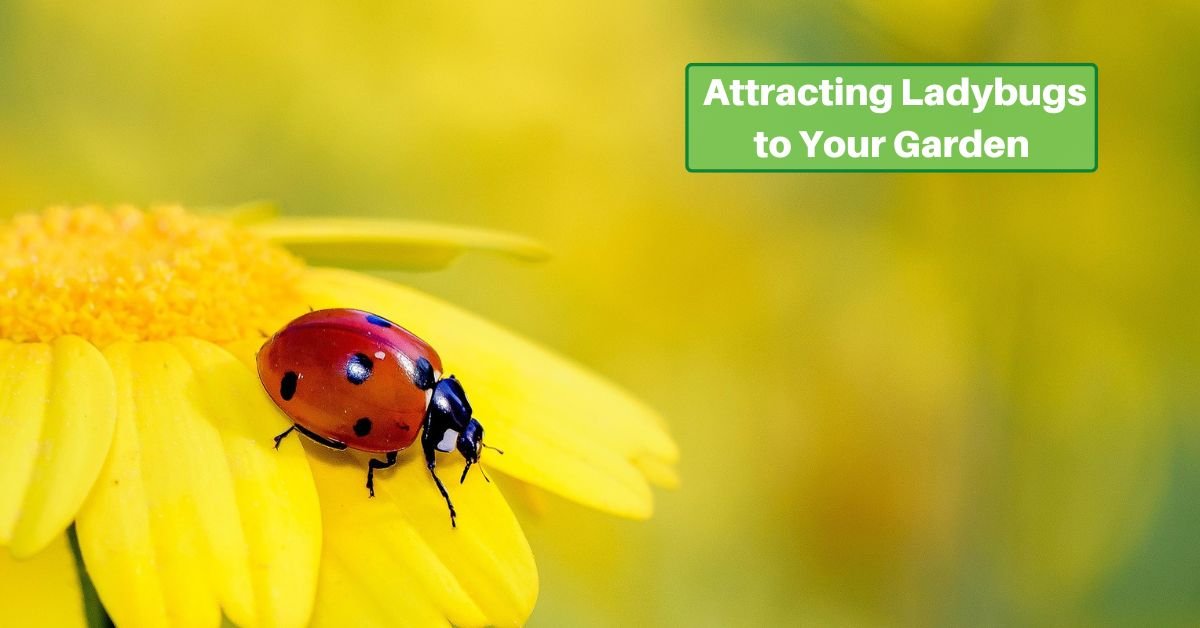Ladybugs are more than just a delightful sight in gardens. They’re easy to recognize with their distinctive spots and vibrant colors, but they bring more than beauty to your yard. These beetles can play a vital role in the health and vitality of our garden ecosystems. Understanding how to attract and sustain these beneficial insects can significantly enhance your garden’s natural balance and productivity.
The Remarkable Advantages of Ladybugs
By attracting ladybugs, you’re contributing to the biodiversity of your garden. They play a crucial role in the garden food web. Despite their gentle appearance, they’re fierce predators. They help maintain a natural balance, keeping pest populations under control.
They voraciously feed on aphids, mites, and scale insects, all harmful to plants. This natural predation is crucial because it reduces the need for chemical pesticides, which can harm the environment and other beneficial garden inhabitants.
Decoding Ladybugs’ Needs
To attract ladybugs effectively, understanding their lifecycle and habitat preferences is essential. Each ladybug species may have specific needs, and catering to these can significantly increase their presence in your garden.
Plant Choices
Cultivating plants that attract ladybugs is a cornerstone in creating a ladybug-friendly garden. Herbs like dill, fennel, and cilantro are excellent choices. If you’d rather flowering plants, calendula, cosmos, and yarrow are great options. These plants provide a food source in the form of aphids and offer nectar and pollen for adult ladybugs.
Pesticide-Free Environment
Implementing organic gardening practices is crucial for maintaining a safe environment for ladybugs. Chemical pesticides can harm these beneficial insects. Instead, focus on natural pest control methods that promote a healthy, chemical-free garden.
Shelters for Safety
Providing natural shelters is essential for attracting ladybugs. They prefer leaf litter, loose bark, and other natural materials to hide from predators and harsh weather. Creating ladybug houses or leaving certain areas of your garden undisturbed can offer the perfect refuge for these insects.
DIY Ladybug Lures
Besides choosing the right plants and creating a safe environment, there are other ways you can attract ladybugs to your garden. Try these:
Home Brews for Ladybugs
Homemade attractants can be effective in drawing ladybugs to your garden. A mixture of sugar, yeast, and water can create a scent similar to aphids, enticing ladybugs. Place this mixture near plants prone to aphid infestations to attract ladybugs.
Watering Hubs
Ladybugs need water to survive. Create shallow watering stations with pebbles or twigs to provide safe drinking spots. Birdbaths or dishes with water and pebbles offer an excellent way for ladybugs to hydrate without the risk of drowning.
The Protective Role of Ladybugs in Gardens
Ladybugs are not just pest predators; they are garden protectors. By consuming large quantities of aphids and other harmful insects, they prevent these pests from destroying plants and spreading diseases. This protective role is vital for the health and productivity of your garden. A well-established ladybug population can significantly reduce pest-related damage, leading to healthier plants and a flourishing garden.
Navigating Common Ladybug Challenges
Encouraging ladybugs to stay in your garden can sometimes be challenging. Ensuring a consistent food supply and suitable shelters are key. Patience is also important; it may take time for a stable ladybug population to establish itself in your garden.
Ladybugs are invaluable allies in creating and maintaining a healthy, thriving garden. By fostering a ladybug-friendly environment and using DIY lures, you can encourage these beneficial insects to make your garden their home. Embracing these natural methods benefits your garden and contributes to a more sustainable and balanced ecosystem.









